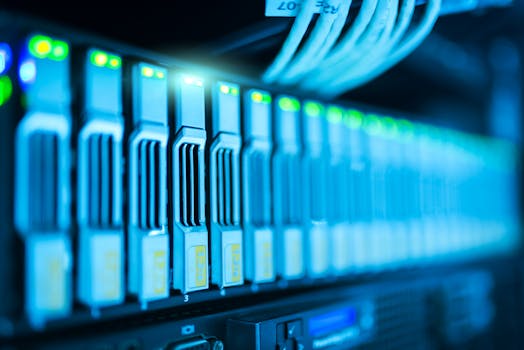
From Copper to Fiber: The Revolution of Internet Infrastructure in Africa
Introduction to the Focus Keyword: From Copper to Fiber
From Copper to Fiber, the internet infrastructure in Africa is undergoing a significant transformation. The shift from traditional copper-based systems to modern fiber-optic networks is revolutionizing the continent’s digital landscape. This revolution is not only enhancing internet connectivity but also contributing to the economic and social development of African countries. In this article, we will explore the journey of internet infrastructure in Africa, from the use of copper to the advent of fiber optics, and its impact on the continent.
The history of internet infrastructure in Africa dates back to the 1990s when the first internet connections were established. Initially, these connections were based on copper cables, which were primarily used for voice communications. However, as the demand for internet services grew, the need for more efficient and faster connectivity solutions became apparent. Copper cables, with their limited bandwidth and high maintenance costs, were no longer sufficient to meet the growing demands of the digital age.
The introduction of fiber-optic cables marked a significant milestone in the evolution of internet infrastructure in Africa. Fiber-optic cables use light to transmit data, offering much higher bandwidth and faster speeds compared to copper cables. This technology has enabled the deployment of high-speed internet, voice, and data services across the continent. Today, fiber-optic networks cover a significant portion of Africa, connecting major cities, towns, and even rural areas.
The Benefits of Fiber-Optic Networks
The adoption of fiber-optic networks has numerous benefits for Africa. Firstly, it provides high-speed internet connectivity, which is essential for economic development. With faster and more reliable internet, businesses can operate more efficiently, and individuals can access a wide range of online services, including education, healthcare, and financial services.
Secondly, fiber-optic networks have the potential to bridge the digital divide in Africa. Many rural and underserved areas, which were previously disconnected from the global digital economy, can now access high-speed internet. This has opened up new opportunities for economic growth, job creation, and social development in these areas.
Thirdly, fiber-optic networks are more reliable and less prone to outages compared to copper cables. This is particularly important for critical applications such as healthcare, finance, and education, where downtime can have serious consequences.
Challenges and Opportunities
Despite the many benefits of fiber-optic networks, there are still challenges to be addressed. One of the major challenges is the high cost of deploying fiber-optic cables, particularly in rural and underserved areas. This has led to a digital divide, where some areas have access to high-speed internet while others do not.
Another challenge is the lack of regulatory frameworks to support the development of fiber-optic networks. In some countries, regulatory barriers, such as licensing requirements and taxation, can hinder the deployment of fiber-optic cables.
However, these challenges also present opportunities for innovation and investment. The development of new technologies, such as wireless fiber-optic networks, can help reduce the cost of deployment and increase access to high-speed internet. Additionally, public-private partnerships can help bridge the funding gap and support the deployment of fiber-optic networks in underserved areas.
Conclusion
The shift from copper to fiber-optic networks is revolutionizing the internet infrastructure in Africa. This revolution has the potential to transform the continent’s digital landscape, driving economic growth, social development, and innovation. While there are challenges to be addressed, the opportunities for investment, innovation, and partnership are significant. As Africa continues to invest in fiber-optic networks, the continent is poised to become a major player in the global digital economy.